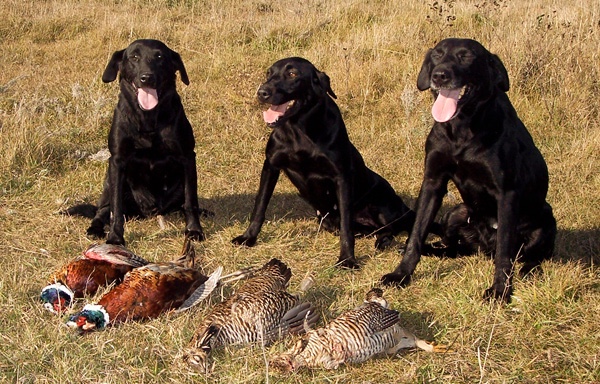Try these tips out when your buddy gets into trouble
People usually don’t like to think about unpleasant things, such as illness or injury. It’s just their nature. But in the case of a sick or injured dog, it’s better to have a game plan before the first hunting trip of the season than to suffer the consequences later.
Most dog owners know about working their animals during the on- and off-seasons, but I wonder if they are familiar with cases of emergencies.
What would you do in the case of a bleeding leg or other types of injuries?
The following tips on treating an injured or sick dog:
• Shock: shock can be identified by shallow breathing, glassy looking eyes, and the gums of the dog usually turn pale. A dog in shock should be kept in a quiet environment, kept cool if it’s warm out and taken to a vet as soon as possible.
• A bleeding leg or paw: the first thing an owner should do is examine for any foreign objects. In the case of flesh wounds, an owner can rinse it out with iodine and cover with cloth or sterile dressing.
• Bleeding nails: Examine the nail, and trim it if necessary. If the nail is completely gone, it might need stitching. It’s surprising how bad a nail can lame up a dog.
• Broken bones: Examine the leg and determine whether it’s a fracture or an open break (bone will be protruding). You can make a field splint in an effort to immobilize the leg so the dog can’t move around on it. The dog should be taken to a vet immediately.
• Heat stroke: This is marked by excessive drooling, lack of coordination and rapid breathing. You don’t want to break down to that point, but if it has, you must reduce the dog’s body temperature immediately and get it into water or dump your cooler of ice on him. In a severe case, the dog should be put down on ice for 10 to 15 minutes. However, watch out so you don’t cool the dog down too fast. It only takes a half-hour for a dog to bounce back. If it isn’t back by then, find a vet.
• Poison: Symptoms include convulsions, trembling, retching, or vomiting. If the dog has gotten into poison, put a couple teaspoons of salt or pour peroxide on the back of it tongue. This will make the dog throw up. Then take the container of poison and the dog to a vet immediately.
• Skunks: If a dog gets sprayed in the eyes, flush with plain warm water. Drops of olive oil can help relieve the pain or the sting. The old adage of soap and water and tomato juices works well, it may take a couple of washings, but it does the job. The mixture can be diluted with lemon juice.
• Porcupine quills: These are usually fairly easy to remove, if they are in the mouth or nose. Before starting to remove the quills, cut off the tips at an angle. Because the quills are hollow, this will release the pressure, making them easier to remove. Sometimes, a pliers may be needed. If you twist them, they will come out easier because they are barbed. Also, vinegar applied to quills sometimes will make them come out easier.
• Eyes: Sometimes a dog will scratch an eye or pick up seeds or other foreign substances. A boric acid solution or warm tap water can be used as a flush.
• Ears: When ears get seeds in them, they can be cleaned with ear flush, available at a drugstore. This can be complicated because we have to be careful when digging them out. You may need an expert, so you have to play it by ear.
Owners should try to be real careful with a dog in pain because it may not recognize its master. An emergency muzzle may be necessary before examination. An injured dog’s first instinct is to avoid humans.
For an emergency muzzle, use a bandage, cloth, belt, or rope and looping it around the dog’s mouth, tying it just below the mouth. Then go straight across to the neck and tie it.
Because a dog perspires through its tongue, you don’t want to leave it on too long, just long enough to get the job done.
Dog Owner’s First Aid
- Adhesive tape
- Gauze bandages
- Scissors
- Iodine
- Chemical ice pack
- Needle-nose pliers
- Eye drops
